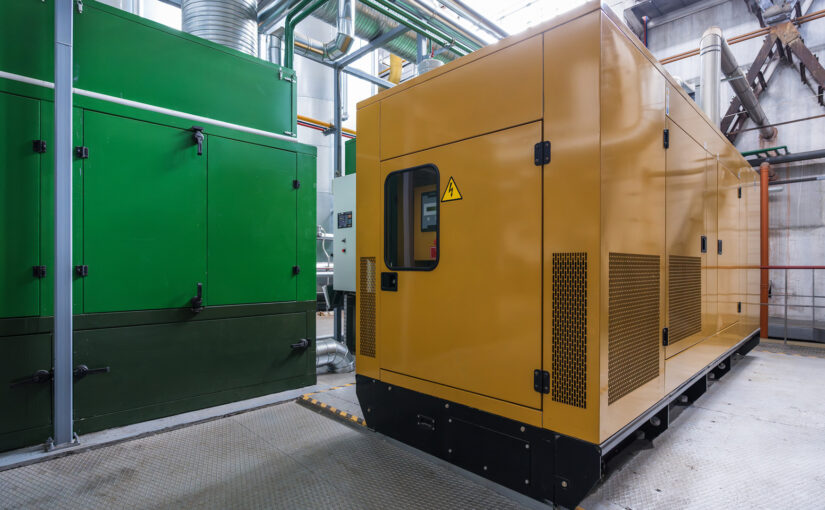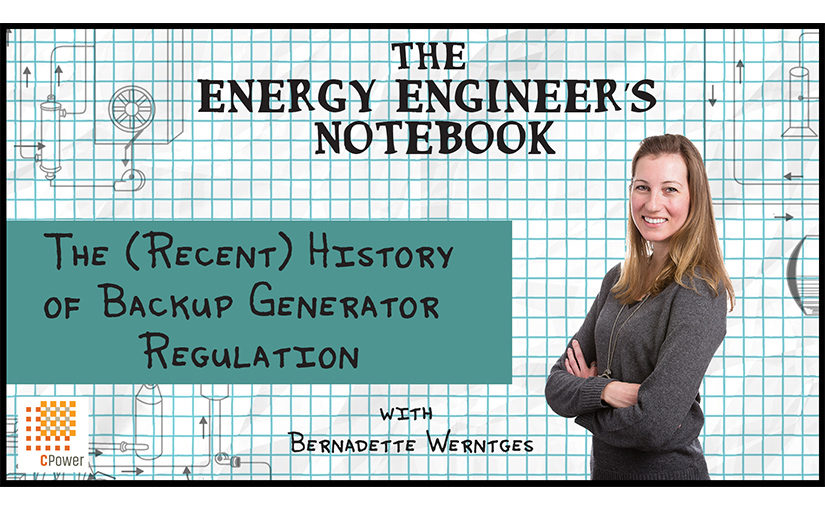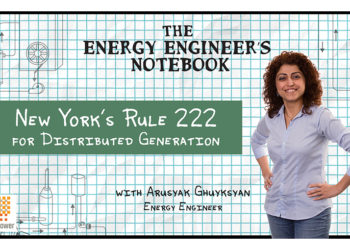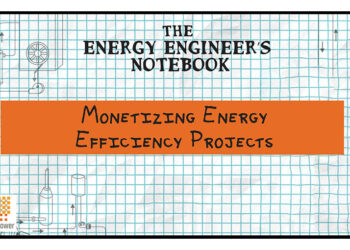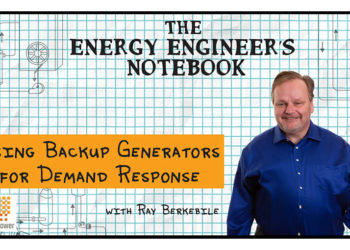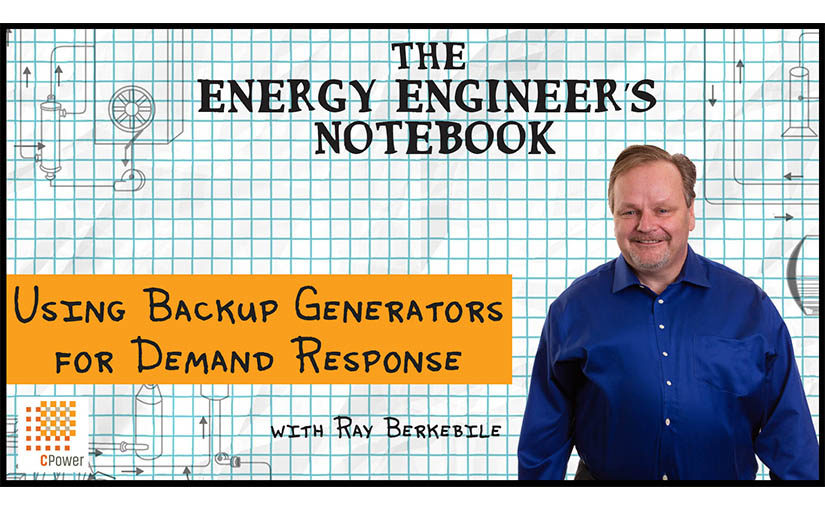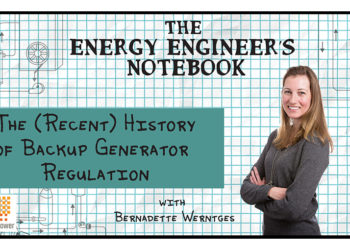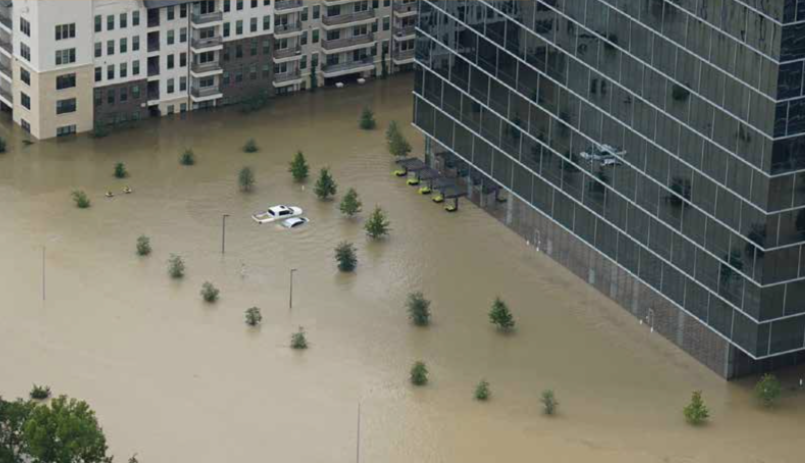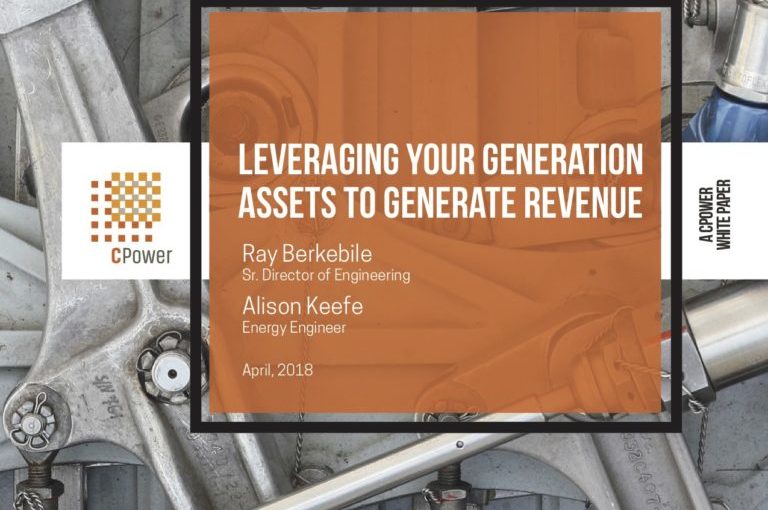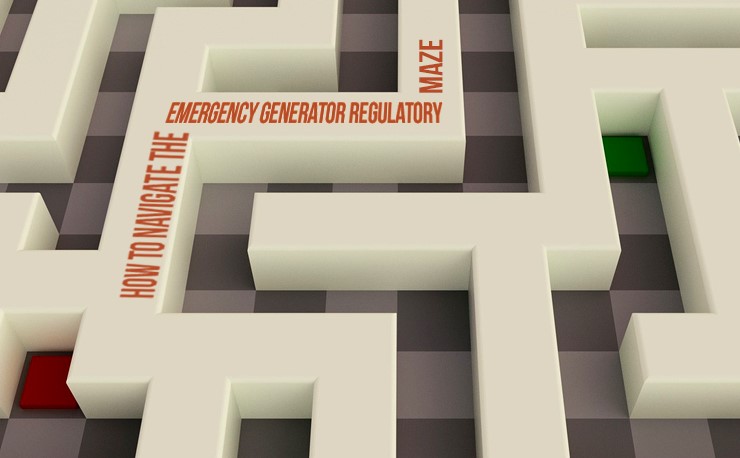EPA’s Backup Generators Clarification Explained – And What it Means for the 50-Hour Rule for Demand Response
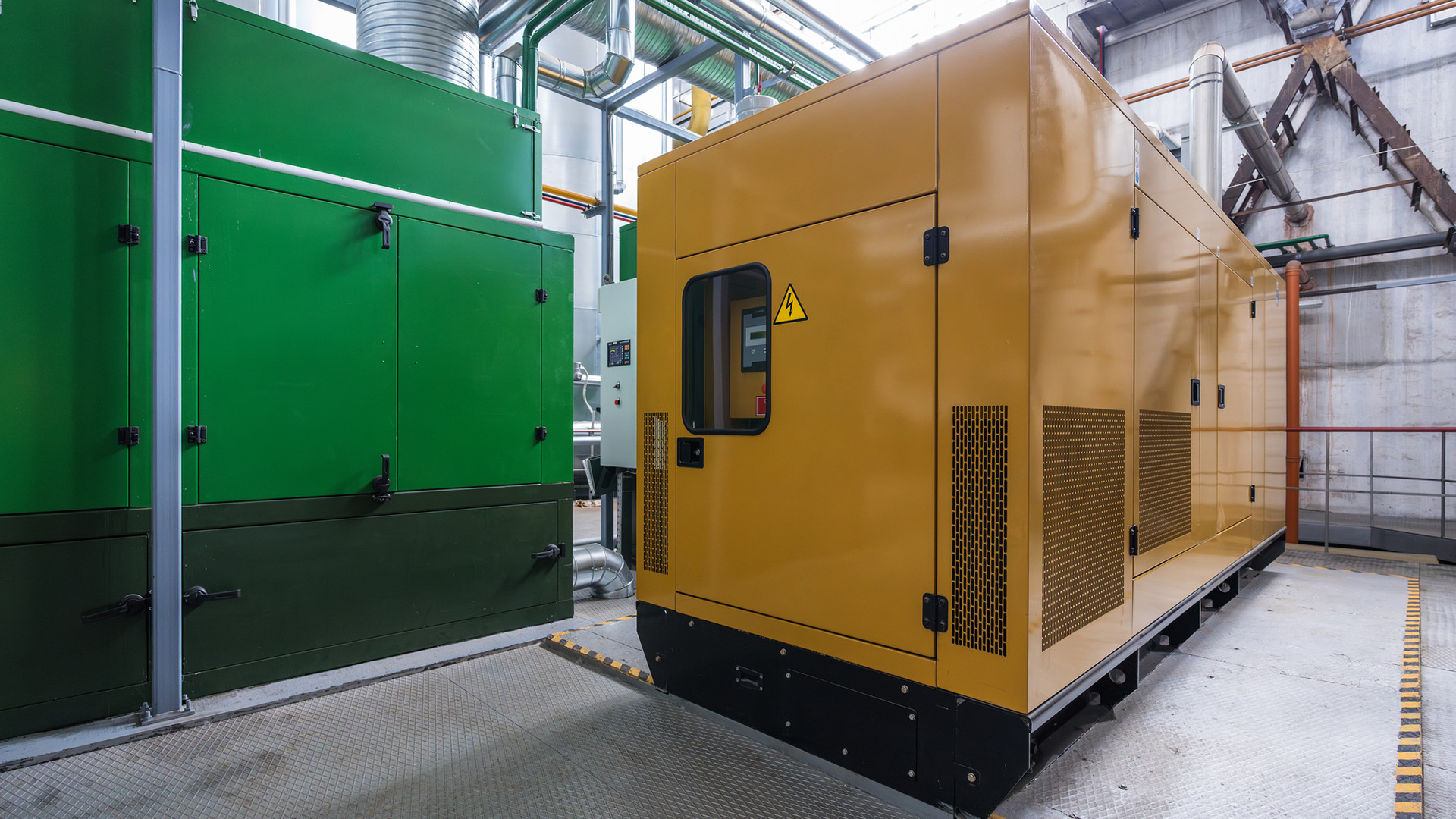
The U.S. Environmental Protection Agency’s recent interpretation on using emergency backup generators in demand response programs does not change the existing prohibition in United States wholesale markets, such as PJM. Emergency generators must still meet federal non-emergency standards to participate in demand response in wholesale energy markets, despite some misinformation that has circulated on the topic.
There is some indication that the federal government may consider a change in the future, but it has not yet done so or indicated what such changes may entail. Until that occurs, federal, state and local air quality agencies are bound to enforce current regulations, which carry serious penalties for violations.
The confusion started in May of this year, when the EPA issued an interpretation approving a Duke Energy emergency backup generator program in North Carolina and South Carolina. Some have mistakenly interpreted the EPA’s announcement as changing the current prohibition that has been in place for over a decade. It did not. The EPA approval was expressly limited to an existing regulation applicable only to local entities such as a utility addressing strictly local reliability problems.
Duke Energy in the Carolinas is not part of a wholesale energy market, also known as an Independent System Operator or Regional Transmission Organization (ISO/RTO). Wholesale markets cover many utility service territories across a broad region. Neither the EPA interpretation nor the existing regulation applies to programs operated by wholesale markets such as PJM. Moreover, a 2014 federal appeals court decision that removed emergency generator participation in wholesale market demand response programs has not been reversed.
The EPA interpretation was explicitly limited to Duke Energy in its capacity as a local balancing authority (LBA) and its dispatching of participating generators for local transmission and distribution system support. An LBA includes a utility that does its own balancing across a localized area such as a single utility.
In contrast, PJM is a regional balancing authority that dispatches across the regional transmission network and many utilities and does not provide balancing within local distribution systems. Because the EPA’s 50-hour rule for enrolling generators requires a demand response program to be managed by a local balancing authority (which Duke Energy is, but RTOs and ISOs are not), emergency generators in these wholesale markets must still meet federal non-emergency standards to participate in demand response.
The following answers to frequently asked questions are based on CPower’s review of the EPA’s guidance on the Duke Energy program and similar reviews by environmental consulting firms.
What did the EPA do in May?
On May 1, the EPA released clarifying information in the form of FAQs with specific guidance “to help ensure data centers and power companies have reliable power” for artificial intelligence (AI). In doing so, the agency stated that it had determined that Duke Energy’s demand response program met the criteria for enrolling stationary emergency engines in response to the utility’s request for interpretation.
What did the EPA say about using backup generators to maintain grid reliability?
According to the fact sheet released by the EPA, the agency understands that backup generators powered by stationary reciprocating internal combustion engines (RICE) are important for maintaining the reliability of the electric grid. It expects these generators to become even more important as the demand for electricity increases.
The EPA also noted that regulatory provisions allow emergency engines to operate for up to 50 hours per year in non-emergency situations if all of the following conditions are met:
-
- The local balancing authority or local transmission and distribution system operator dispatches the engine.
- The dispatch is meant to mitigate local transmission and/or distribution limitations and avert potential voltage collapse or line overloads that could lead to the interruption of power supply in an area or region.
- The dispatch follows reliability, emergency operation or similar protocols that follow specific North American Electric Reliability Corporation (NERC), regional, state, public utility commission or local standards or guidelines.
- The power is provided only to the facility itself or to support the local transmission and distribution system.
- The owner or operator identifies and records the entity that dispatches the engine and the specific NERC, regional, state, public utility commission or local standards or guidelines being followed for dispatching the engine.
What does the EPA’s clarification mean for demand response programs in wholesale energy markets such as PJM?
Nothing has changed yet to allow emergency generators to participate in PJM or other wholesale market demand response programs. As previously stated, the EPA clarification did not apply to demand response programs run by RTOs or ISOs because it emphasized Duke Energy’s role as a local balancing authority and its dispatching of participating generators for local transmission and distribution system support, per the EPA’s 50-hour regulation. ISOs and RTOs such as PJM are not local balancing authorities.
However, the clarification does signal heightened, and perhaps unprecedented, interest in harnessing distributed energy resources such as backup generators to increase grid flexibility and reliability. Given shifting rules and programs, plus heightened price signals and improved economics, CPower’s expert team continues to track regulations and policies closely. We will inform customers if the EPA issues further guidance or makes changes.
If you would like to learn more in the meantime, read this CPower whitepaper: Generating Revenue with Your Emergency Generation: How to Reclassify Assets as Non-Emergency Generation.
The Recent History of Backup Generator Regulation (Video)

Fill out the form below and your question may be the subject of an Energy Engineer’s Notebook episode.
(If your question isn’t selected for an episode, a CPower engineer will get back to you with an answer.)
Backup Generators for Demand Response (Video)

Fill out the form below and your question may be the subject of an Energy Engineer’s Notebook episode.
(If your question isn’t selected for an episode, a CPower engineer will get back to you with an answer.)
Rule 222: NYS DEC cracks down on NOx emissions from commercial generators
The New York State Department of Environmental Conservation (NYSDEC) has approved a new regulation called 6 NYCRR Part 222 Distribution Generation Sources. The proposed rule would replace the March 1, 2017 adopted Part 222, which was challenged in the Supreme Court in the County of Albany and stayed.
Controlling nitrogen oxide emissions from distributed generation sources is Rule 222’s essential goal. The proposed rule will apply only in the New York City metropolitan area as defined at 6 NYCRR Part 200.1(au), which covers New York City, Westchester, Rockland, and Nassau counties.
DG sources enrolled in demand response programs sponsored by the NYISO or electric utilities as well as sources used during times when the cost of electricity supplied by utilities is high (defined separately in Part 222 as price-responsive “economic” generation sources) are subject to the new rule.
Rule 222 was approved on March 11, 2020, and will be implemented effective May 1, 2021. Both new and existing distributed generation sources that intend to participate in DR will need to notify the NYSDEC by March 15, 2021 or 30 days prior to beginning participation, whichever is later. That said, organizations in the New York City metro area that use a stationary generator for demand response should contact CPower since the rule could ultimately affect their ability to earn revenue by helping the grid reduce load in times of stress or high economic prices.
Any organization curious to learn more about Rule 222 and whether or not their generator is affected should contact a licensed curtailment service provider.
This post was excerpted from the 2020 State of Demand-Side Energy Management in North America, a market-by-market analysis of the issues and trends the experts at CPower feel organizations like yours need to know to make better decisions about your energy use and spend.
CPower has taken the pain out of painstaking detail, leaving a comprehensive but easy-to-understand bed of insights and ideas to help you make sense of demand-side energy’s quickly-evolving landscape.
White Paper: Leveraging Energy Assets to Help Sustain Resilience in Healthcare
Leveraging Your Generation Assets To Generate Revenue
Webinar: Leverage Your Generator Assets To Earn Revenue
Properly permitted, your emergency generation—EG—is both a reliability asset and a revenue generator. EG provides a great opportunity to earn revenue and save on energy costs through demand response (DR) and demand management programs.
The path from emergency generation to revenue generation, though, may seem like a complex, confusing, and occasionally contradictory thicket of state and local environmental regulations. Few organizations fully understand the scope and intricacies of EG regulation, which often results in misinformation, missteps, and missed revenue opportunities.
Fortunately, CPower’s extensive experience and knowledge base has led hundreds of organizations through the jumble of regulations and provided a clear path to monetizing EG assets. This webinar covers everything today’s energy managers and engineers need to to know to maximize the benefits of their EG portfolio. It includes:
- A brief history of emergency generation as a component of demand-side energy management, and the numerous rule changes that have created the current EG landscape
- How existing generators can be upgraded to meet increasingly stringent permitting requirements, bringing previously excluded MWs back into the market
- Success stories illustrating how CPower has helped find and reclaim “lost” megawatts and enroll them in lucrative demand response and demand management programs
Join Ray Berkebile, CPower’s nationally recognized EG permitting expert, and CPower engineer Alison Keefe as they lead this in-depth look at how your EG assets can generate revenue for you, too.
Download the slides: Leverage Your Generator Assets To Earn Revenue Webinar (PDF)
Surviving New EPA Rules and the Emergency Generator Regulatory Maze
Is your organization one of the thousands of commercial/industrial energy customers that use back-up generators (BUGs)? Are they used as emergency generators (a.k.a., EGs or gensets) in demand response (DR) programs? If so, 2016 may have felt like an episode of the “Survivor” reality show, except instead of the usual cast of GenX characters and challenges you were unfortunately tasked with surviving a maze of ever-changing genset regulations.
Bad News, Good News: The past year saw important changes regarding the use of stationary reciprocating internal combustion engines (RICE) that continue to evolve at the federal level as administered by the U.S. Environmental Protection Agency (EPA), which itself is in now in the midst of changes with newly-confirmed administrator Scott Pruitt at the helm. EPA rules provide that BUGs that are intended for emergency use when blackouts occur are exempt from reporting requirements and most emissions regulations. The bad news is that EPA changes significantly restricted the circumstances where such generators can be compensated for operations while the grid is still up. The good news is many such generators can achieve “non-emergency” status without equipment upgrades by meeting specific permitting and reporting requirements.
Bit of History – 50-hour Rule No Longer Applies: In early 2016, it was determined that EGs could potentially participate in DR programs under a different rule (referred to as the “50-hour rule”). A coalition of DR providers including CPower took specific steps to clarify the applicability of the 50-hour rule with EPA as well as explore avenues to address concerns with the prior 100-hour rule as related to EG use for DR:
- We funded an extensive legal review on the 50-hour rule which outlined the case for allowing EGs to continue DR participation with this rule as a basis.
- We shared our well-documented analysis with EPA, who responded that they were not in agreement.
- While we believe the EPA’s interpretation is not aligned with the actual language in the regulation nor the structure of the electricity market, federal agencies such as EPA enjoy the latitude to interpret their regulations in any manner they deem appropriate.
- While CPower will continue to try to convince EPA that our well-documented position bears merit, all DR service providers clearly need to comply with EPA’s current interpretation.
Further confounding the situation is that a generator classified as “nonemergency” under federal regulations could be deemed “emergency” under state and/or local regulations. Recent examples include the Rule 222 that applies to permitting in New York; while California is moving from the traditional environmental permitting approach towards utility-based restrictions.
What This Means to You: As a DR participant with EGs, you should always be aware of the nuances defining EG assets that do not meet EPA’s interpretations of local requirements as well as the Federal Non-Emergency standard for DR curtailments. This applies even if your current DR service provider may advise you otherwise (especially regarding the use of EGs via the 50-hour rule). Any reputable vendor certainly should not expose you to any potential EPA violations or penalties. And if you indeed find out that EGs are not permitted for use in DR programs, make sure your service provider has an experienced engineering team who is willing to work with you to achieve the best possible alternative curtailment strategies.
On the Positive Side: Again, the good news is that in many instances, you can still use EGs to participate in DR programs and support grid reliability. A good curtailment service provider or DR aggregator should be able to assist clients with specific steps for permitting and retrofits so their engines can still participate wherever possible. At CPower, we have helped several clients with permitting so their engines can now effectively participate in emergency DR events to support the grid. Some of these services include:
- Helping clients evaluate generation assets for permitting compliance at both the federal and state/local levels
- Upgrading engines with aftermarket controls and/or automated DR (ADR) controls
- Developing recommendations for adding load to optimize use of generators
- Facilitating engine and generator upgrades (either working with a carefully vetted partner or customer-preferred vendor)
Bottom Line: As capacity costs increase, active DR participation becomes even more compelling and relevant. Changes in EPA regulations have impacted the ability of DR customers like you to use stationary emergency generators as part of your load reduction strategies. Luckily, you can look to DR service providers to offer valuable “survival tips” that can bring this episode to a stable ending.
“Thanks to accurate guidance from CPower’s engineering team, our engines were successfully permitted for use in demand response by the state’s Department of Environment. Their in-depth knowledge and tenacity throughout the process clearly contributed to enabling our facilities’ continued participation in the 2017 DR performance season.” – Facilities Director at a large New England based manufacturing firm.
CPower takes a leadership role and shaping market transformation while advocating for our customers to help you navigate the regulatory maze and maximize DR program benefits. The result? Increased energy savings and earnings not just from optimized participation in Emergency DR, but also in non-emergency voluntary programs (like price based Economic DR). In some cases, you can also use your engines for peak-shaving to reduce capacity costs while maintaining compliance with environmental regulations.
Do you have a generator? Does it meet State and EPA guidelines? Are you leveraging it as a demand response revenue resource? Check out our Emergency Generator Decision Tree today to ensure you make the right EG permitting and compliance choices moving forward.



